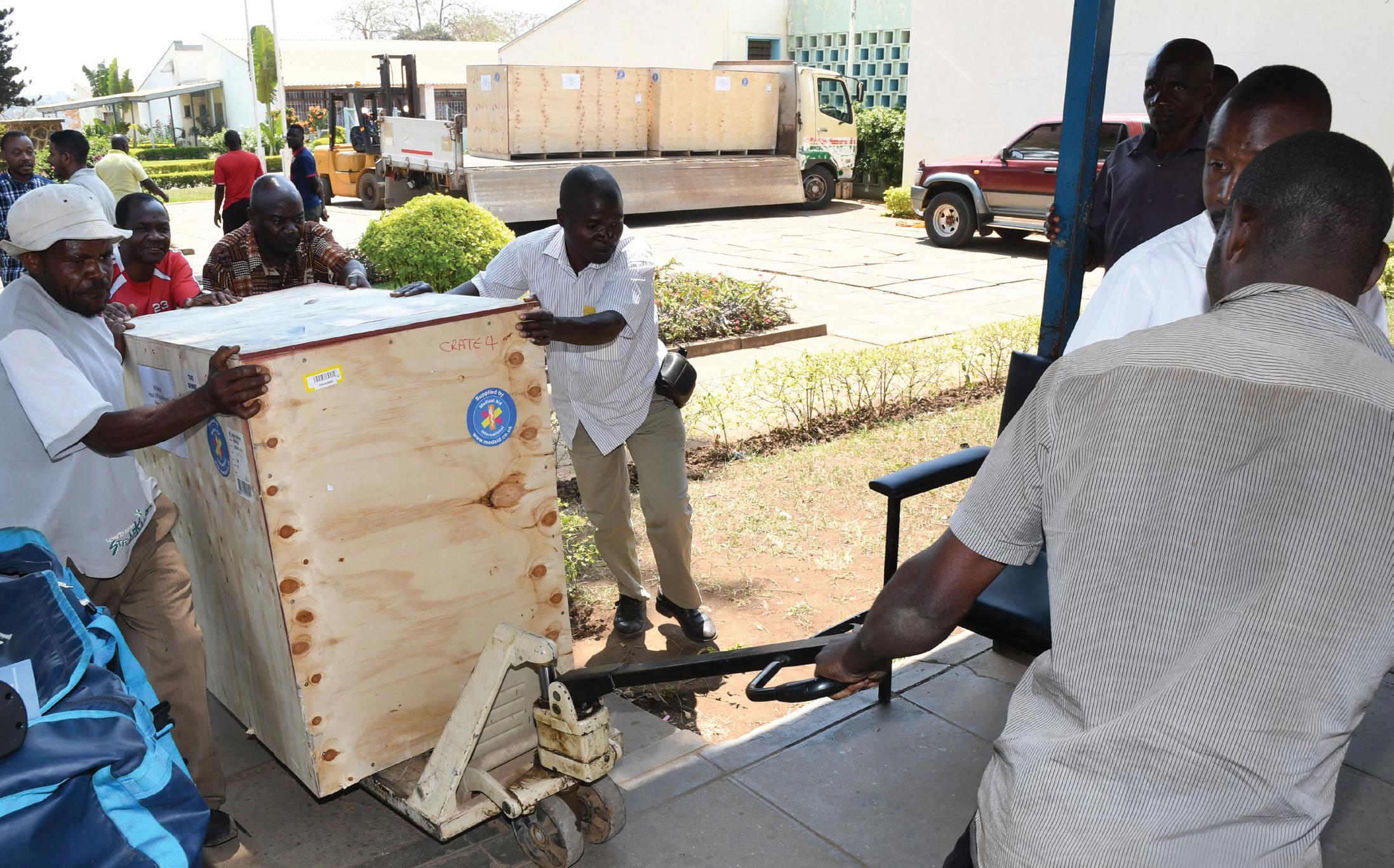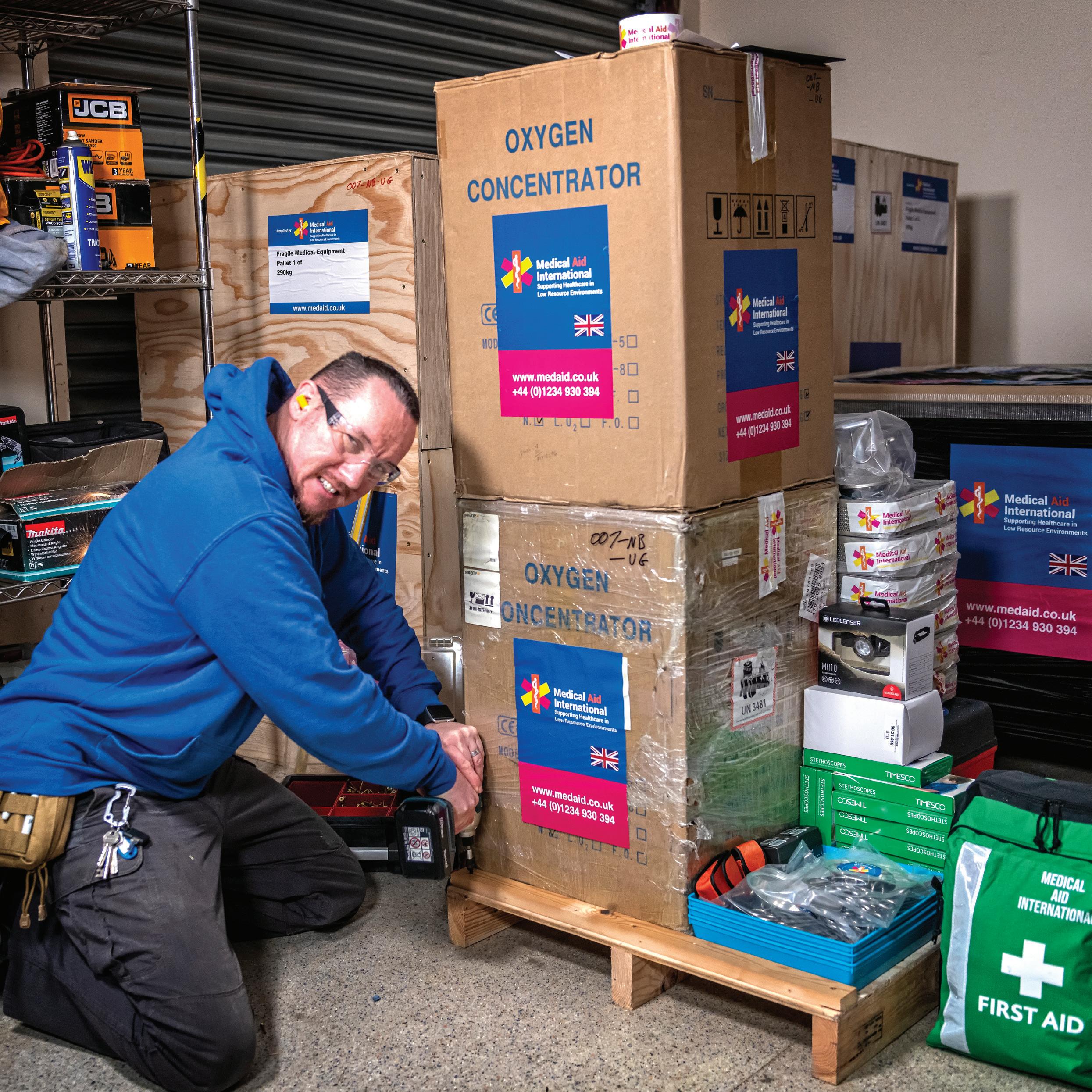
4 minute read
Donations: Combining New And Used For Optimal Outcomes
In LMIC regions, funds are typically limited, and it is vital to make them stretch as far as they can. At Medical Aid International, we specialise in optimising the combination of donated new, ex-demonstration and pre-owned equipment to achieve the best possible results from every partner’s and healthcare institution’s budget.
We do this by sticking to three crucial principles. All donations:
Advertisement
• Must be suitable for the needs and limitations of the LMIC environment they will be sent to • Must contribute to long-term, sustainable improvement of clinical outcomes • Must exclude unsuitable items, with their inevitably high disposal costs

DONATION GUIDELINES Effective recycling saving lives
We are really pleased you are reading this, as hopefully it means you may have some equipment to donate to us! However, sometimes we are sent items that are of no use and these cost us to dispose of, so we have set out below some guidelines for you.
We specialise in making budgets stretch as far as they can, to maximise their impact on healthcare provision. We do this using new, ex-demonstration, pre-owned equipment and occasional consumable supplies. It is vital that all equipment that we send is suitable for the environment that is going to in order to make a long-term and sustainable difference to the healthcare provision in Low to Middle Income Countries. Do you have a Corporate Social Responsibly budget? If so, talk to us as we have many projects you could support.
We are always on the look out for:
Bowls, bowl stands, kidney dishes Crutches
Defibrillators
Diathermy Emergency equipment Examination and mobile and ceiling operating lights (LED) GP surgery equipment Gynae/obstetric examination tables Image Intensifiers Instruments
IV stands Lead aprons Manual examination couches Manual operating tables and attachments Microscopes Minor procedure tables Mobile X-ray machines
Monitors Nursing items Occupational therapy equipment Operating theatre furniture Orthopaedic plates/screws/ external fixation Orthopaedic power tools Patient trolleys Physiotherapy equipment Pre-hospital care items Reusable laryngoscopes Sheets/blankets
Suction Training aid such as manikins Ultrasounds Ward furniture
X-ray vests
> Out of date items > Single use items (IE AMBU bags, single use laryngoscopes, syringes, IV cannula) > Orthopaedic boots, braces > Catheters, dressings, colostomy bags > In general, we do not take consumables though there are exceptions such a sutures and anaesthetic breathing adjuncts, as long as they are in date If you are a major supplier with very high levels of stock to dispose of please get Please note that we cannot take the following: in touch.
Getting items to us
We are delighted to collect donations but it does cost us to do so, it is greatly appreciated if you can arrange delivery to our warehouse.
We Help Donors to Get it Right
These principles notwithstanding, the reality is that our donors need clear, straightforward advice on what they can and cannot donate, and how. We help them to get this right by publishing donation guidelines that set out exactly what our typical equipment needs are, how they can get donations to us, and which items should not be donated. The extremely positive message in these guidelines is that there are far more donated items we can use – in both new, ex-demo and pre-owned condition – than items we can’t. They range from the smallest kidney bowls and dishes, to operating theatre instruments, tables and furniture, to monitors, diathermy machines and defibrillators – to name just a few. Indeed, the only items we can’t use are generally those that are out of date (these can be ineffective or even unsafe to use), single-use or consumable (these are too costly for LMIC environments, with a few exceptions), or in specific categories like catheters, colostomy bags, dressings and some orthopaedic accessories. You can see a copy of the actual donation guidelines on the page opposite.

Keeping Our (and Donors’) Costs Down
We do everything we possibly can to keep the costs of receiving and processing donations down, and to minimise the cost to the donor of sending donations to us. We have four centralised warehouses (not in London), each of which can receive donations of all types. This centrality and choice of location keeps our logistical costs low and, for the donor, means there is no need to manage and pay for multiple shipments to multiple locations. We can also collect donations from the donor.
At Medical Aid International, we give both used and unused equipment a new life, to save life. We are totally committed to making it easy for donors of all kinds to play their part in this transformation – from small organisations, to larger concerns with corporate social responsibility programmes, to major suppliers with very high levels of donatable stock.
Healthy patients, healthy planet – our environmental commitment
Our focus is always on resource-efficient solutions within our overarching environmental commitment, which focuses on reusing, recycling, and repurposing donated medical equipment, thus preventing it ending up in landfill. Wherever possible, we also minimise waste by supplying equipment that requires none or few of the consumables that can be difficult to dispose of responsibly in LMIC regions.









